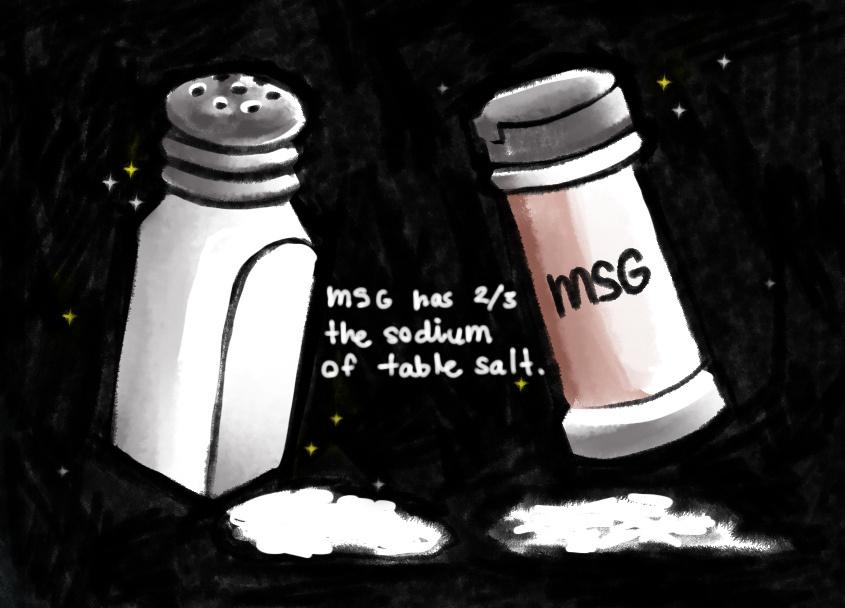
1 minute read
THE MYSTERIOUS FIFTH TASTE
from Winter 2023 Edition
by scienceholic
Author: Mirabel Zou
Editors: Yan Xi Chen and Jasleen Matharu
Advertisement
Artist: Kimberly Arinton
Umami Perhaps you have heard of it from a cooking show, your science class, or even a particular anime series The concept was first introduced in 1908 by Dr. Kikunae Ikeda and has since revolutionized the culinary industry, but umani is not as popular as you might imagine.
Recognized as the taste of monosodium glutamate (MSG), umami is one of the five core tastes, including sweet, sour, bitter, and salty The word for umami
In Japanese is 旨 味 , which loosely translates to “the essence of deliciousness ” The taste is characterized as the meaty, savory deliciousness that intensifies flavors. Essentially, umami is the taste of glutamate, an amino acid that naturally occurs in the human body and most foods we eat. Glutamic acid is sour with some umami taste to it, but pure savoriness is only achieved after neutralization, resulting in MSG
You may still wonder how umami tastes. It can spread across the tongue, stimulating the throat, root, and back of the mouth. The flavor is balanced and complex, creating a satisfying feeling in the mouth It lasts longer than other flavors, which helps deliver a mouthwatering sensation

Foods naturally rich in amino acids–such as cheese, tomato, asparagus, mushroom, fish and other seafood, and meat–have the most umami flavor. Umami is also attainable by adding flavor-boosting ingredients such as ketchup, miso, soy sauce, and/or fish sauce Other ways of incorporating umami include smoking, fermenting, or dehydrating the food, as they help build glutamate compounds over a long time
Not only is it delicious, but umami also has some health benefits. Compared to table salt (sodium chloride), one of the leading causes of cardiovascular diseases, MSG only has two-thirds of the sodium in it. Therefore, umami-filled ingredients are usually considered a healthier alternative to salt-filled ones. For example, soy sauce has nearly six times less sodium per 100 g than salt while also contributing a satisfying boost of flavor and complexity. Despite being discovered relatively late, umami has existed throughout history as a significant contributor to flavor in almost all food The study of its impacts on human health is still going on to this day, but one thing is certain: a little bit of umami can make any savory dish tasty and filling.











